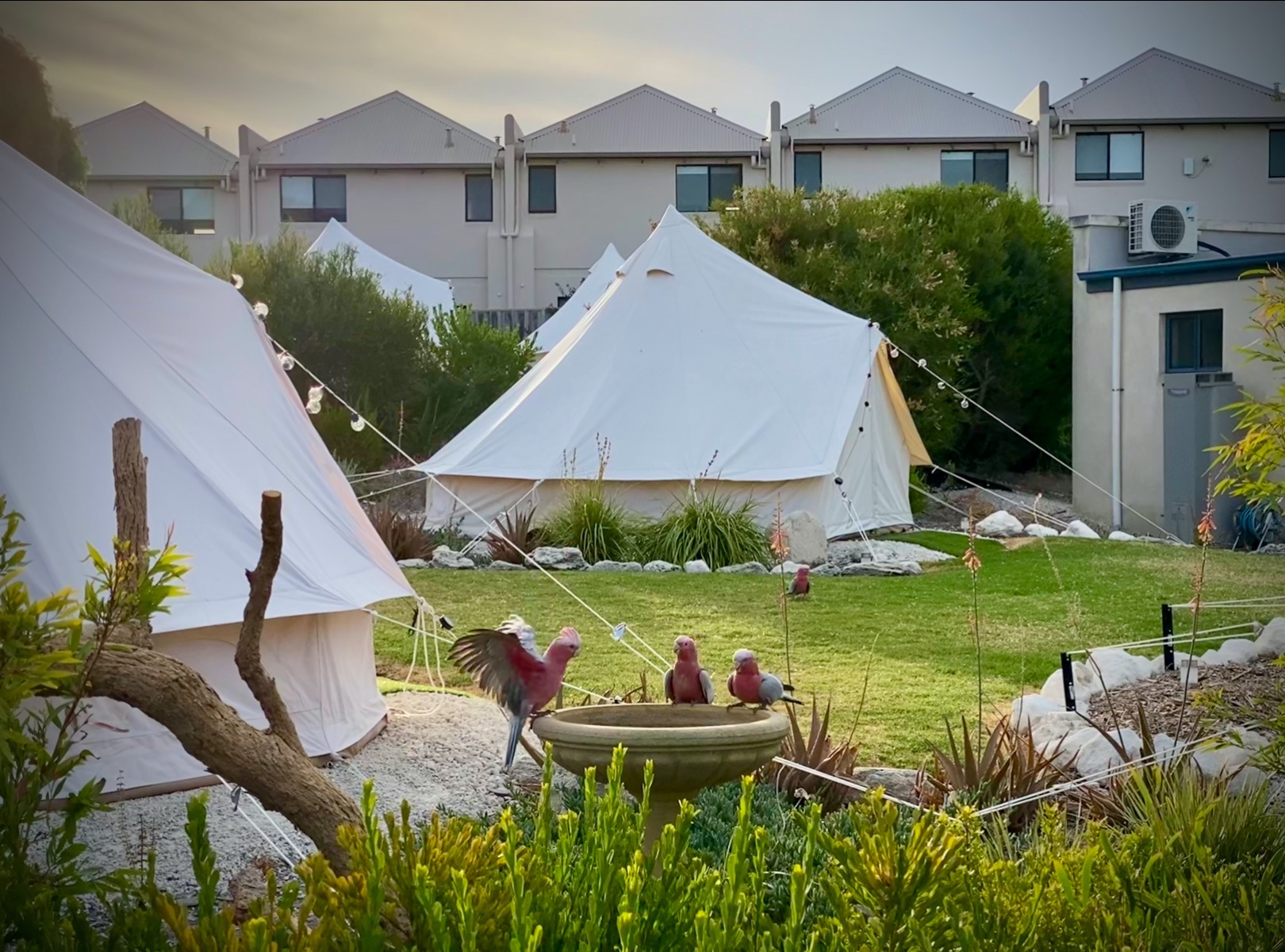
Sell-out event puts spotlight on gardening with natives
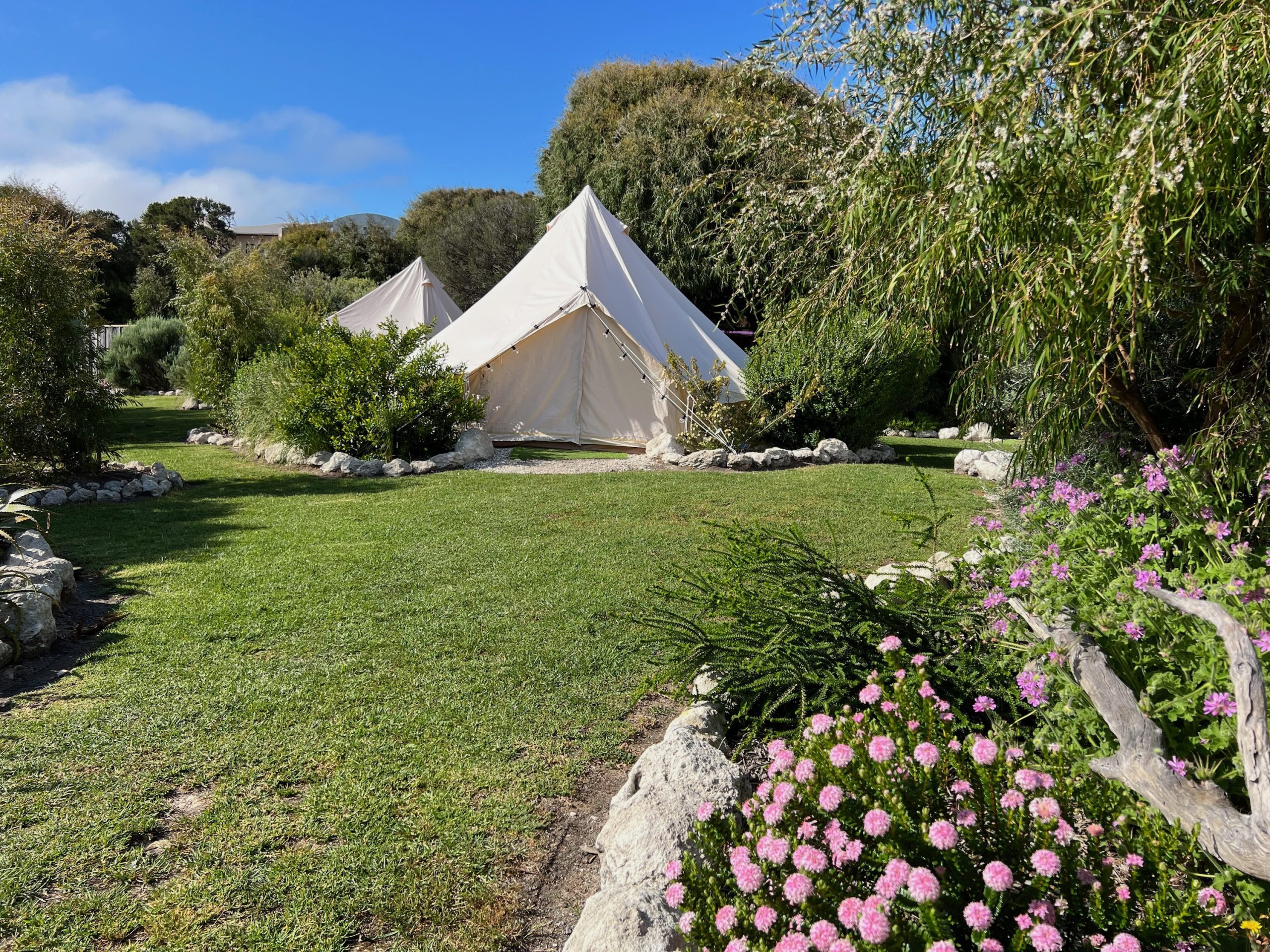
A success story turning lawn into an inspiring native garden
Surfpoint’s garden is a success story about getting rid of lawn and turning it into an inspiring native garden that’s great for people and prioritises wildlife! Local ecotourism business Cape to Cape Explorer Tours runs popular Surfpoint Resort, which has resort-style accommodation and a glamping village run by general manager Nic Chirico and her partner and groundskeeper Nick Campbell (pictured below).
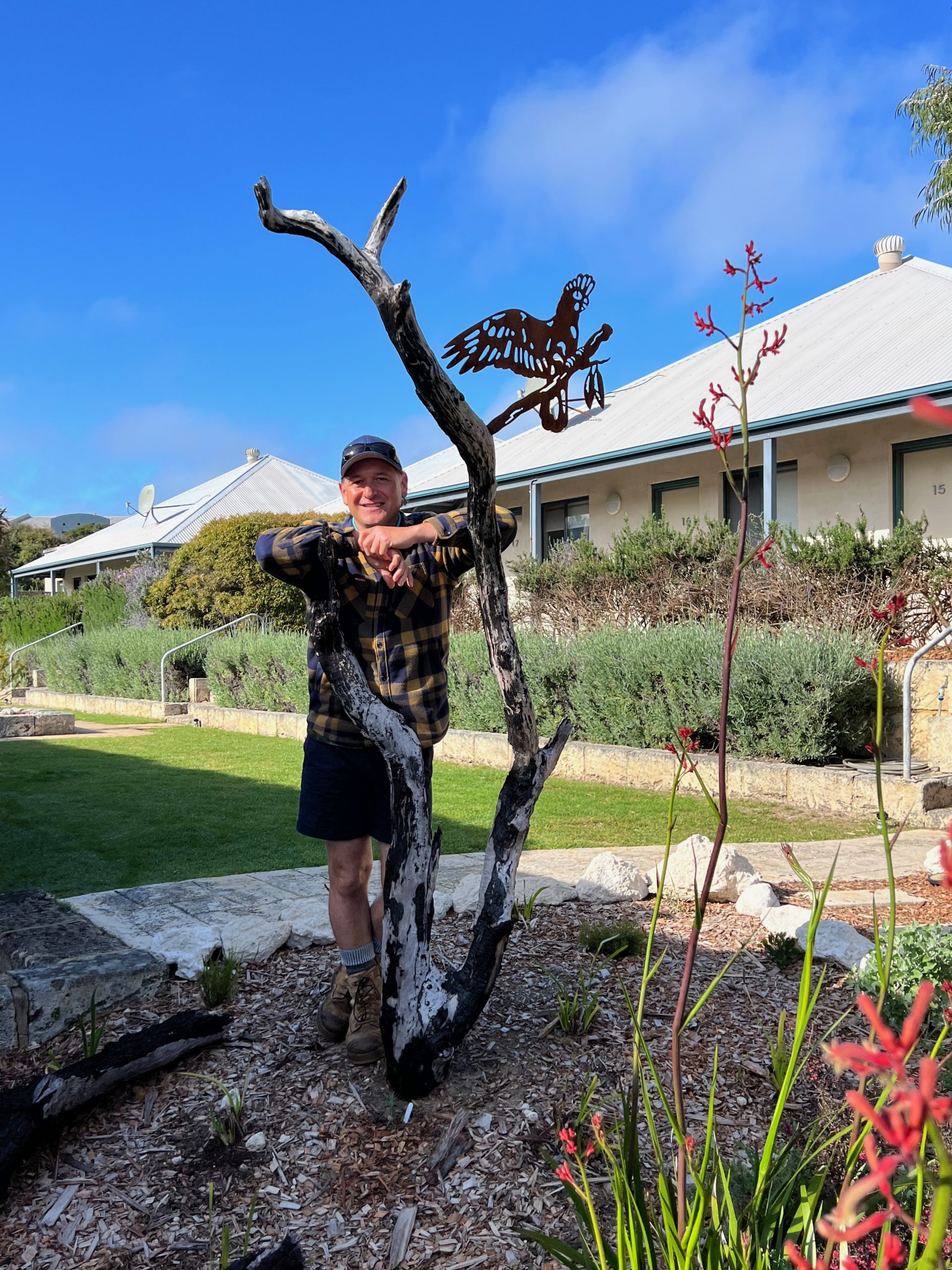
Magic of the Cape to Cape Track captured in resort gardens
The entire garden was done on just a $400 budget using 200 tube stock from Geographe Community Landcare Nursery. The nursery’s Rod Carey will be at the open garden to explain more (and don’t miss seeing the slideshow on the big screen at Surfpoint of the process of creating the garden).
Some of the original Mediterranean plants remain because they are existing habitats for wildlife. And the aloe is fire-wise. But otherwise, natives dominate. In particular, species that hikers see on the Cape to Cape Track. There’s also a mix of large woody sculptures and rocks for reptile, insect and pollinator habitat.
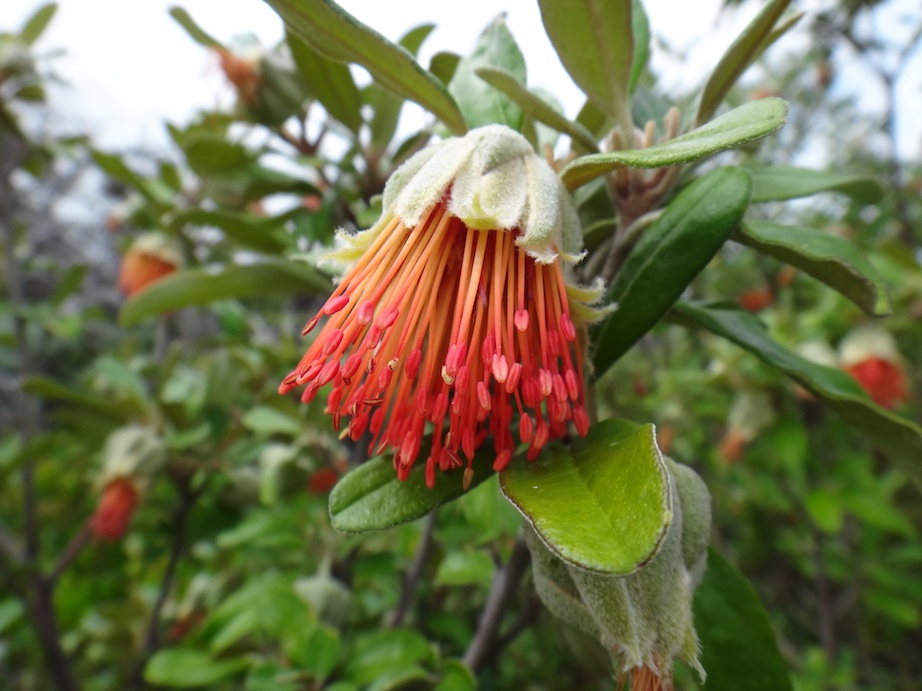
Surfpoint plantings chosen around indigenous calendar
“Our garden started as a blank canvas of lawn which was a water sucking wasteland (see the ‘before’ photo below),” says Nic. “We had shire approval to install tent sites for Cape to Cape Explorer Tours’ exclusive use. So we had to incorporate the tent pads and design a garden that could bring the magic of the Cape to Cape Track into the design. It also creates space for our campers to feel cosy in their own space.”
Nic says flowering plants were chosen based on the six seasons of the Noongar calendar. And the garden survives on rainfall and an occasional sprinkler water during consecutive weeks of hot summer weather.
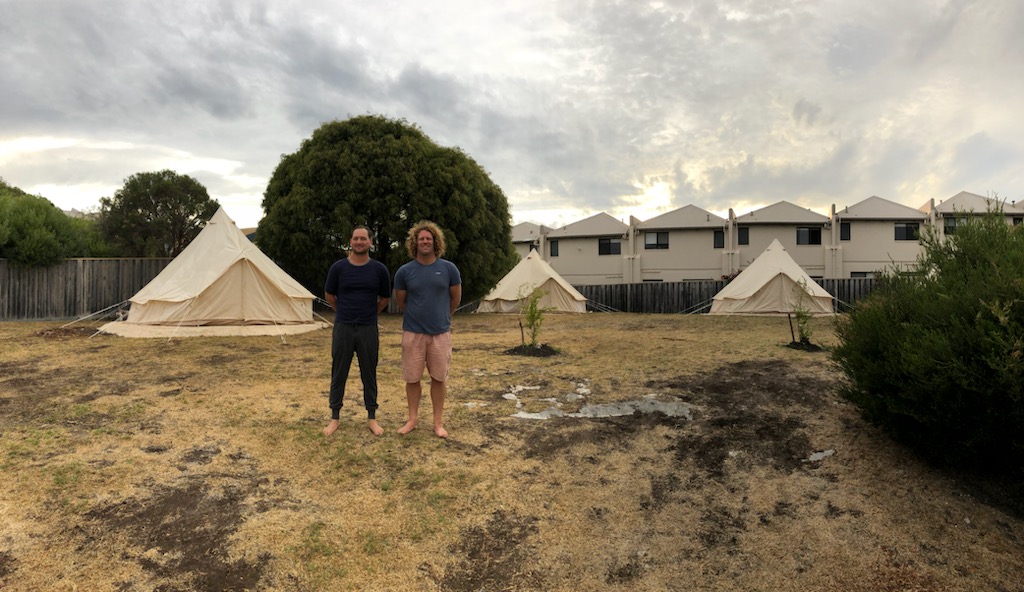
Surfpoint plantings chosen around indigenous calendar
Now, a swag of local bird species visit, nest and feed in the waterwise garden. There’s also lizards and Western Ringtail possums. “We have had many more birds make their home in our garden than we ever could have hoped for,” says Nic. “Planning out the garden and planting at the right time of year gave us a 97 per cent success rate with our tube stock planting.”
Gardener Nick learned about native species through connecting with cultural custodians, and he’s improved soil conditions by turning the resort’s food waste into compost and worm castings. He’s so connected to the garden he even talks to the plants. Amazing work team!
